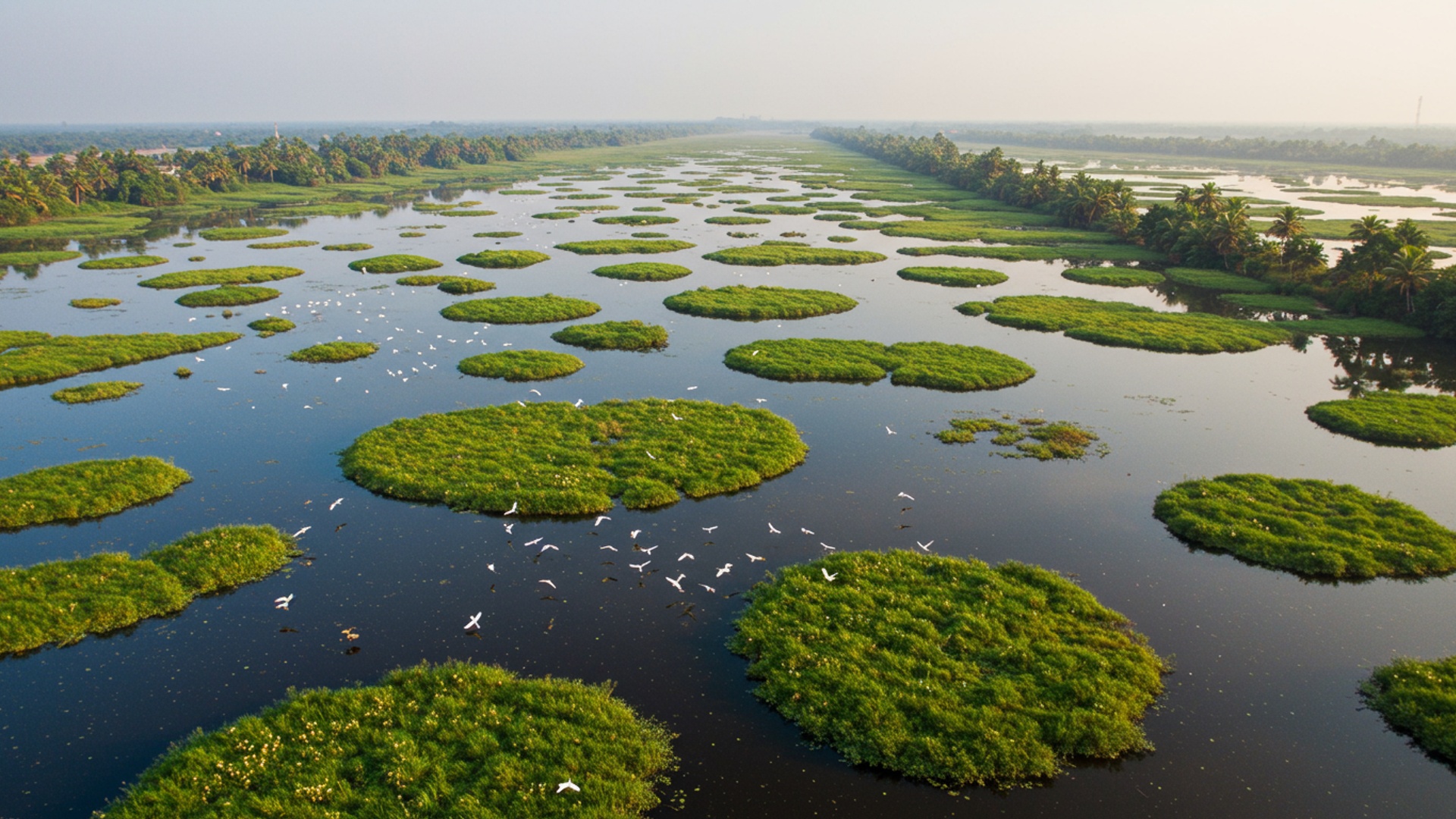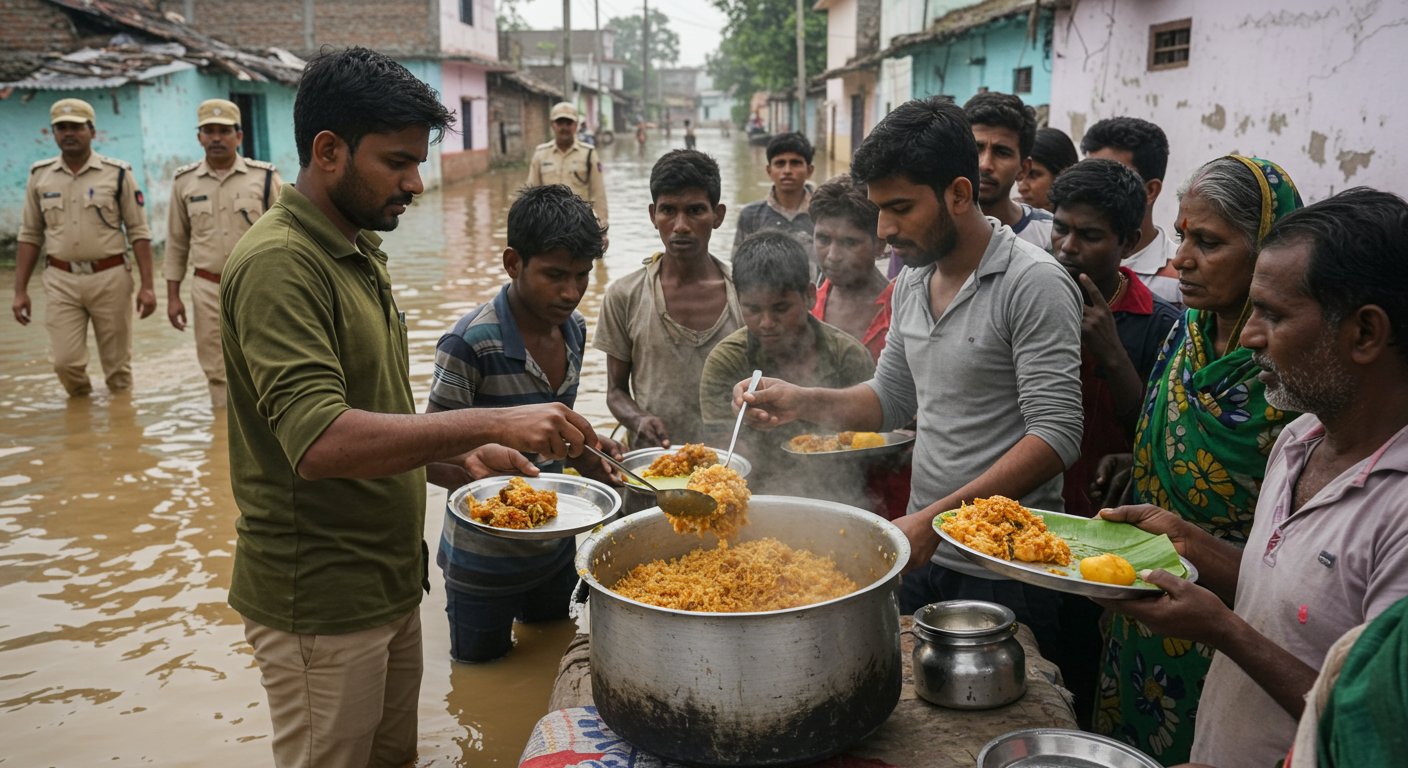Kerala’s vital natural areas are on the verge of gaining significant international recognition. Four of the state’s vital wetlands are now very close to getting the prestigious Ramsar tag, a global honor for their rich plant and animal life. This recent step forward means these water-filled places, which are homes for many unique creatures, could soon join a list of the world’s most protected natural sites. The move brings urgent global attention to keeping these essential natural areas safe and highlights their crucial role in the health of our planet.
New Efforts for Wetland Protection
Four crucial wetlands in the Indian state of Kerala are currently being considered for recognition as Ramsar sites, a status given to wetlands of global importance. This move aims to boost efforts to protect these vital natural areas. The wetlands under consideration are Vellayani and Akkulam-Veli in Thiruvananthapuram, Kottooli in Kozhikode. the Kattampally-Valapattanam-Kuppam wetland complex in Kannur.
The technical committee of the State Wetland Authority, Kerala (SWAK), has already approved the initial proposals to nominate these sites. These proposals will then be presented to the full SWAK body before being sent to the Union Ministry for Environment, Forests and Climate Change. The final decision on whether to grant Ramsar status rests with the Ramsar Secretariat.
Understanding Ramsar Status
The Ramsar Convention is an international agreement signed in Ramsar, Iran, in 1971. Its main goal is to protect wetlands and ensure their wise use around the world. Wetlands are defined broadly by the Convention to include many types of water bodies and habitats, both natural and human-made. These include lakes, rivers, swamps, marshes, peatlands, coastal areas like mangroves. even artificial sites like fish ponds and rice fields.
When a wetland is designated as a Ramsar site, it means it is recognized for its ecological value and biological diversity. Countries that designate a site agree to create and follow a plan to manage the wetland. This plan aims to protect the wetland and ensure it is used in a smart way.
“The Ramsar tag adds top priority for the conservation and management of a wetland besides attracting external funds for its management.” – Suneel Pamidi, Member Secretary of the State Wetland Authority, Kerala.
India currently has a total of 91 Ramsar sites, which is the highest number in South Asia. Kerala already has three Ramsar sites: Vembanad, Ashtamudi. Sasthamkotta lakes.
essential Wetlands in Focus
The four wetlands proposed for Ramsar status are known for their unique ecological features and rich biodiversity:
- Vellayani Lake (Thiruvananthapuram): This is one of the few freshwater lakes in Kerala. It is crucial for local water supply and biodiversity.
- Akkulam-Veli Lake (Thiruvananthapuram): This is an estuary system located near the capital city. It plays a role in local ecology.
- Kottooli Wetland (Kozhikode): This wetland in Kozhikode is a known haven for birds, including those that migrate from other countries.
- Kattampally-Valapattanam-Kuppam Wetland Complex (Kannur): This is a complex network of wetlands in Kannur. It is essential for its diverse plant and animal life.
These sites were chosen because they meet the criteria set by the Ramsar Convention. They are unique wetlands with rich plant and animal diversity, including crucial species of birds and fish.
Why These Places Matter
Wetlands are crucial natural systems often called the “kidneys of the earth” because they help filter water. They provide many vital services:
- Protecting nature: They are home to countless types of plants and animals, especially migratory birds, fish. amphibians.
- Supporting ecosystems: Wetlands help clean water, control floods. recycle nutrients.
- Helping with climate change: They store carbon and help regulate local weather patterns, which is vital for dealing with climate change.
- Providing resources: Many local communities depend on wetlands for fishing and other resources, which support their livelihoods.
Kerala’s ecosystem is known for its remarkable variety of living things and different habitats, from dense rainforests to calm backwaters. Wetlands are a key part of this, supporting unique plants and animals and traditional ways of life like fishing.
Despite their importance, wetlands in Kerala and worldwide face threats such as pollution, too many nutrients, human activity. loss of natural areas. The declaration of Ramsar status helps address these issues by providing a framework for better protection.
Steps Towards Recognition
The process for these wetlands to gain Ramsar status involves several steps:
- The State Wetland Authority, Kerala (SWAK), prepares detailed insights sheets for each wetland, known as Ramsar data Sheets (RIS).
- These draft proposals are reviewed and approved by SWAK’s technical committee.
- The proposals are then formally sent to the Union Ministry for Environment, Forests and Climate Change.
- Finally, the Ramsar Secretariat reviews the proposals and decides on the designation. This process can take a long time.
Officials from the environment department have stated that SWAK expects to approve the proposals in an upcoming meeting. If approved by the Ramsar Secretariat, these wetlands will be added to the global list of Wetlands of International Importance.
Benefits of Being a Ramsar Site
Being a Ramsar site brings several crucial benefits for the wetlands and the surrounding communities:
- Increased Conservation Focus: It makes wetland conservation and management a top priority.
- Funding Opportunities: It can help attract money for managing and protecting the wetland, including funds from national programs like the National Plan for Conservation of Aquatic Ecosystems (NPCA) and potentially international sources.
- Improved Management: Countries must develop and carry out management plans to protect the wetland’s ecological health.
- Public Awareness and Research: It raises public understanding about the importance of wetlands and encourages education and research activities.
- Tourism and Local Economy: It can attract tourists interested in nature, which can help local communities economically and provide money for conservation projects.
- Expert Advice: It provides access to expert advice on wetland protection and management issues.
Views from Different Groups
Different groups, known as stakeholders, play a role in wetland conservation. The State Wetland Authority, Kerala (SWAK), works with various groups, including government departments, local self-governing bodies (panchayats), community organizations. the fishing community.
There is a recognized need for local community participation in wetland conservation and management. Programs like “Wetland Mitras” are being set up to involve local people and groups. These networks help bring local knowledge and different views into wetland management plans. They also help build skills related to wetland management within communities.
One key challenge highlighted by stakeholders in existing Ramsar sites, like Ashtamudi, is dealing with solid and liquid waste. Other issues include changes in freshwater flow and tidal movements due to human constructions, which can increase salinity and affect fish populations and the livelihoods of fishers. Stakeholders interpret the value of wetlands and often express a willingness to contribute financially to conservation efforts.
“We selected these sites which meet all the criteria designed by Ramsar. These are unique wetlands with rich diversity and essential species of flora and fauna, birds and significant fish resources.” – Suneel Pamidi, Environment Department Director.
Local bodies sometimes lack the power and resources to deal with these problems, suggesting a need for a single managing unit focused on improving wetland health.
Future Steps
After SWAK approves the proposals, they will be sent to the Union government, which will then submit them to the Ramsar Secretariat. The Ramsar Secretariat will review these proposals and might ask for changes or additions. The state will need to make sure these corrections are included.
Once Ramsar status is granted, the focus will shift to developing and putting into action specific management plans for each site, with ongoing monitoring of their ecological health. The goal is to ensure the long-term health and wise use of these crucial natural areas for both nature and people.
![]()










